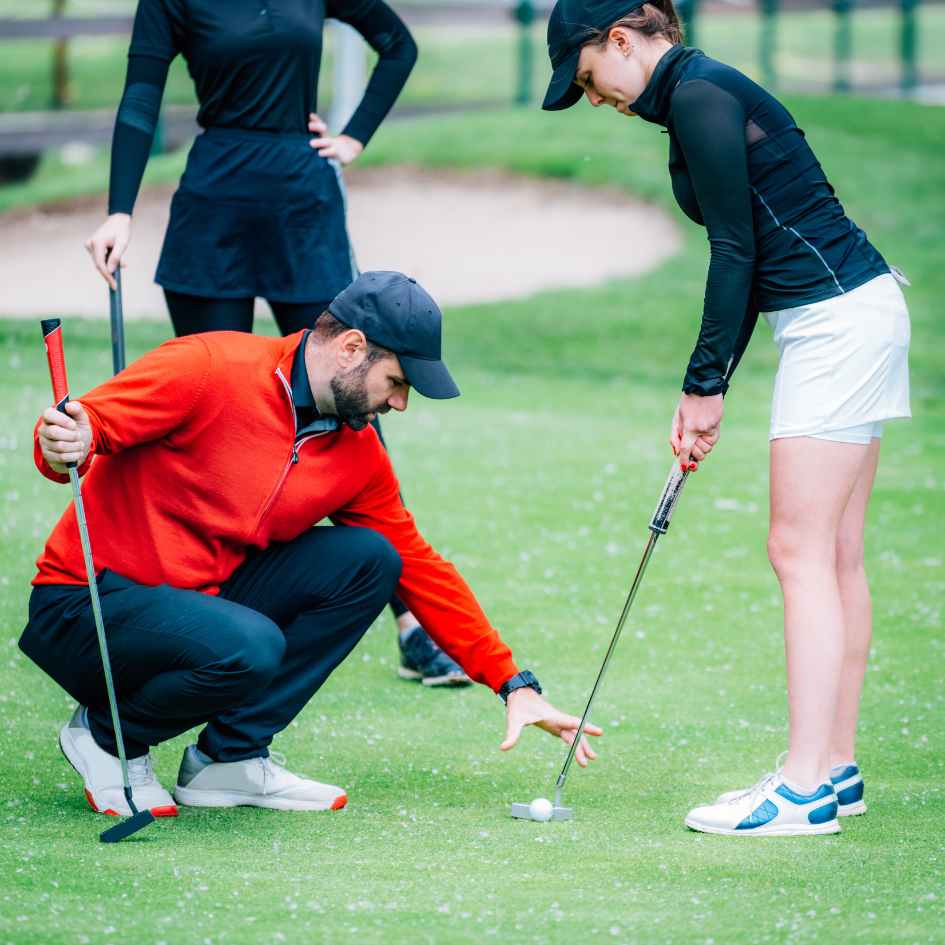
9 Essential Golf Putting Tips for Beginners
9 Essential Golf Putting Tips for Beginners
Perfecting Your Putting as a Beginner
Welcome to Golf For Beginners Academy, where we guide novice players through the basics of golf. Today, we’re focusing on an integral aspect of the game – putting. For beginners, mastering the putt is key to lowering scores and enjoying the game to the fullest. Let’s delve into essential golf putting tips tailored just for you.
Golf Putting Tips for Beginners
Grip and Stance: Start with a comfortable grip, neither too tight nor too loose. Adopt a shoulder-width stance for stability. This sets the foundation for a controlled and consistent putting stroke.
Eye Alignment: Ensure your eyes are directly over the ball. This alignment enhances your perception of the putting line and helps you visualize the correct path to the hole.
Smooth Putting Stroke: Develop a smooth, pendulum-like putting stroke. Avoid unnecessary wrist movements and let the shoulders control the motion. A steady stroke promotes accuracy and distance control.
Distance Control: Mastering distance control is crucial. Spend time practicing putts of various lengths to develop a feel for the required strength. Consistent distance control is a game-changer on the green.
Read the Green: Analyze the slope and break of the green before making your putt. Look for subtle undulations that can influence the ball’s path. Reading the green is a skill that improves with practice and observation.
Practice Putting Drills: Incorporate putting drills into your practice routine. Focus on short putts to build confidence and gradually extend the distance as your skills improve. Consistent practice hones your putting prowess. Check out this article for our favorite putting-drills for beginners!
Putter Choice: Experiment with different putters to find one that feels comfortable for you. The right putter can enhance your control and confidence on the green. Consider seeking advice from a golf professional to find the perfect fit.
Maintain a Routine: Develop a pre-putt routine to create consistency in your setup and stroke. This routine could include a few practice swings, checking the line, and aligning the putter face to your intended target.
Stay Calm Under Pressure: Putting often determines the outcome of a hole. Practice keeping a calm mindset, especially when facing pressure situations. Relax, trust your skills, and execute your stroke with confidence.
Listen to a deeper explanation on our Podcast!
Time to get to work!
Congratulations! You’re now equipped with essential golf putting tips designed specifically for beginners. Put these insights into practice, and watch as your putting skills improve, contributing to a more enjoyable and successful golfing experience. Stay tuned to Golf For Beginners Academy for more valuable tips to enhance your game. Happy putting!
Ready to become a better golfer? ⛳️
You’ve learned about the putting game of golf. If you’re eager to dive deeper into golf’s intriguing world and master the ins and outs of the game, look no further than our “Golf For Beginners – The Ultimate Starter Guide.” Whether you’re a newbie or just brushing up on your skills, this online course has something for everyone.
⛳️ Discover the Ultimate Golf Starter Guide Right Here ⛳️
Did You Like These 9 Essential Golf Putting Tips for Beginners?
If you want more detailed help with you game of golf, and specifically about the short game of golf, our partner-portal called World Of Short Game deliver great content for all short game related topics. Click here to visit World Of Short Game.
And if you live in Denmark, never hesitated to reach out to Danish Golf Academy for help with any part of your game.

How to Hit a Golf Chip Shot for Beginners
How to Hit a Golf Chip Shot for Beginners
Perfecting the Basics: A Beginner's Guide to Mastering Chip Shots in Golf
Welcome to Golf For Beginners Academy, where we simplify the art of golf for novice players. Today, we’re unveiling a beginner-friendly guide on executing chop shots with precision. These fundamental tips will enhance your control and bring you one step closer to achieving those dreamy shots around the green.
Unlocking Success: Beginner-Friendly Tips for Chip Shots
Perfecting your chip shot is crucial for close-to-the-hole success. Let’s dive into these beginner-friendly tips to make your contact with the ball better than ever.
Build the Right Foundation: Start with a setup tailored to your shot. Place the ball under your sternum, hands just inside the left thigh, and weight distributed 55% on the left foot and 45% on the right. This ensures proper shaft lean for smooth club motion.
Which Way Are You Swinging? Swing the club along the established plane. Coordinate wrist movements and body rotation to match the swing plane for a seamless backswing.
An Open Face is a Happy Face: Allow the clubface to open during the backswing. An open clubface promotes a gliding motion over the ground, ensuring a smoother impact and release.
Let It Go, Let It Go!: In the downswing, permit your hands and wrists to move freely. Avoid forcing the club; let it follow its natural flow for a more controlled impact.
Your Release Needs Backup: Support the wrist release with a rotation of the upper body. A coordinated motion of the upper and lower body in the follow-through ensures a balanced and controlled release.
Up Up Up: Move certain parts of your body upward during the motion, especially the grip of the club. Ensure your head, body, and shoulders extend slightly, allowing the clubhead to move downward while the grip moves upward.
You’ve Got to Go Forward!: In the finish position, shift about 90% of your weight onto the front foot. This improves control over the club’s contact point and ensures a stable finish.
How Far Are You Going?: Maintain consistent swing lengths in both backswing and follow-through. An equal-length backswing and follow-through enhance low point control and distance accuracy.
Please Don’t Kill the Bird!: Grip the club with the right pressure. Experiment with different grip pressures (1 to 10 scale) to find the one that allows a natural release and consistent impact conditions.
Yes - Lets go!
Congratulations! You’ve just unlocked the secrets to mastering chip shots in golf. Practice these beginner-friendly tips consistently, and you’ll soon find yourself confidently navigating the short game. Happy chipping!
Ready to Take the Plunge? ⛳️
You’ve learned about how to master the chip shot. If you’re eager to dive deeper into golf’s intriguing world and master the ins and outs of the game, look no further than our “Golf For Beginners – The Ultimate Starter Guide.” Whether you’re a newbie or just brushing up on your skills, this online course has something for everyone.
⛳️ Discover the Ultimate Golf Starter Guide Right Here ⛳️
Did you like How to Hit a Golf Chip Shot for Beginners?
If you want more detailed help with you game of golf, and specifically about the short game of golf, our partner-portal called World Of Short Game deliver great content for all short game related topics. Click here to visit World Of Short Game.
And if you live in Denmark, never hesitated to reach out to Danish Golf Academy for help with any part of your game.

How do I improve my golf swing? 25 Checkpoints
How do I improve my golf swing? 25 Checkpoints
Strategies on How to Improve Your Golf Swing
Welcome to Golf For Beginners Academy, where we unravel the mysteries of refining your golf swing. If you find yourself pondering the question, “How do I improve my golf swing?” – you’re in the right place. In this detailed guide, we’ll delve into a variety of strategies to enhance your swing and, consequently, elevate your overall golf performance.
Understanding the Mechanics: The Foundation of Improvement
To improve your golf swing, it’s essential to understand the foundational mechanics that contribute to a successful and consistent motion.
Grip Refinement: Start by evaluating and refining your grip. A proper grip establishes control and allows for a more natural release of the clubhead.
Posture Assessment: Analyze your posture during setup. Ensure a balanced and athletic stance, promoting better weight distribution and stability throughout the swing.
Alignment Precision: Check your alignment regularly. Misalignment can lead to inaccurate shots, so ensuring proper alignment is a fundamental step in refining your golf swing.
Mastering the Takeaway: Focus on a smooth and controlled takeaway. A well-executed takeaway sets the stage for the entire swing sequence.
Balancing Weight Transfer: Practice a seamless weight transfer during your swing. A balanced shift from backswing to downswing contributes to power and accuracy.
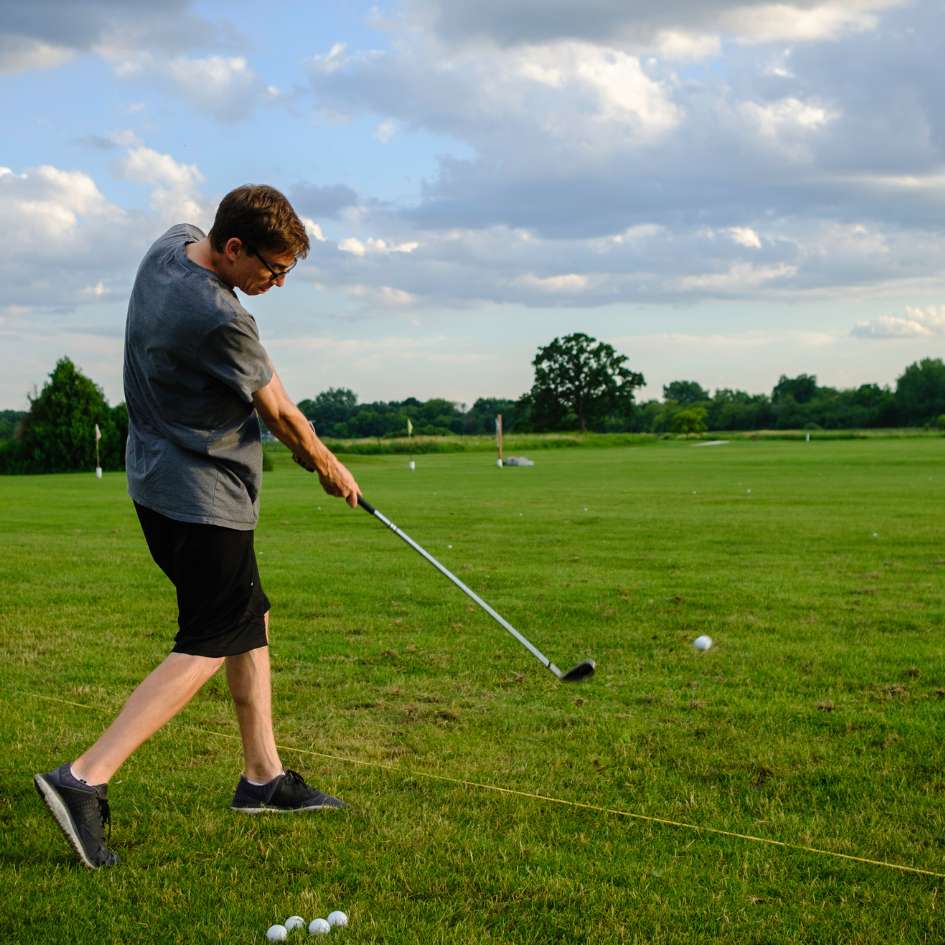
Addressing Common Swing Flaws
Identifying and addressing common swing flaws is crucial for continuous improvement.

Slice Correction: If you’re struggling with a slice, analyze your clubface angle and swing path. Adjustments to your grip and swing plane can help correct this common issue.
Hook Reduction: For golfers battling a hook, focus on grip adjustments and swing path correction. A smoother release and controlled follow-through can help reduce unwanted hooks.
Consistent Tempo: Maintain a consistent tempo throughout your swing. Sudden changes in speed can lead to inconsistency, so practice a rhythmic and controlled motion.
Overcoming Tension: Eliminate tension from your swing by staying relaxed. Tension can hinder flexibility and fluidity, impacting the overall quality of your swing.
Enhancing Clubhead Speed: Work on increasing clubhead speed gradually. A faster clubhead contributes to greater distance, but it should be achieved through proper mechanics, not excessive force
Drills and Exercises for Improvement
Incorporate specific drills and exercises into your practice routine to target key aspects of your swing.
Swing Plane Drills: Practice swinging along the correct plane using alignment sticks or training aids. This helps ingrain the proper path for a more consistent swing.
Weight Transfer Exercises: Incorporate weight transfer exercises into your fitness routine. Strengthening key muscles contributes to a more controlled weight shift during the swing.
Balance and Stability Workouts: Improve your balance and stability with targeted exercises. A stable base enhances overall control and prevents unnecessary compensations in your swing.
Clubhead Awareness Drills: Develop a heightened awareness of your clubhead’s position throughout the swing. This awareness promotes a more deliberate and controlled swing.
Mirror Practice Sessions: Utilize mirror practice sessions to observe your swing mechanics. Visual feedback is invaluable for identifying areas that need adjustment.
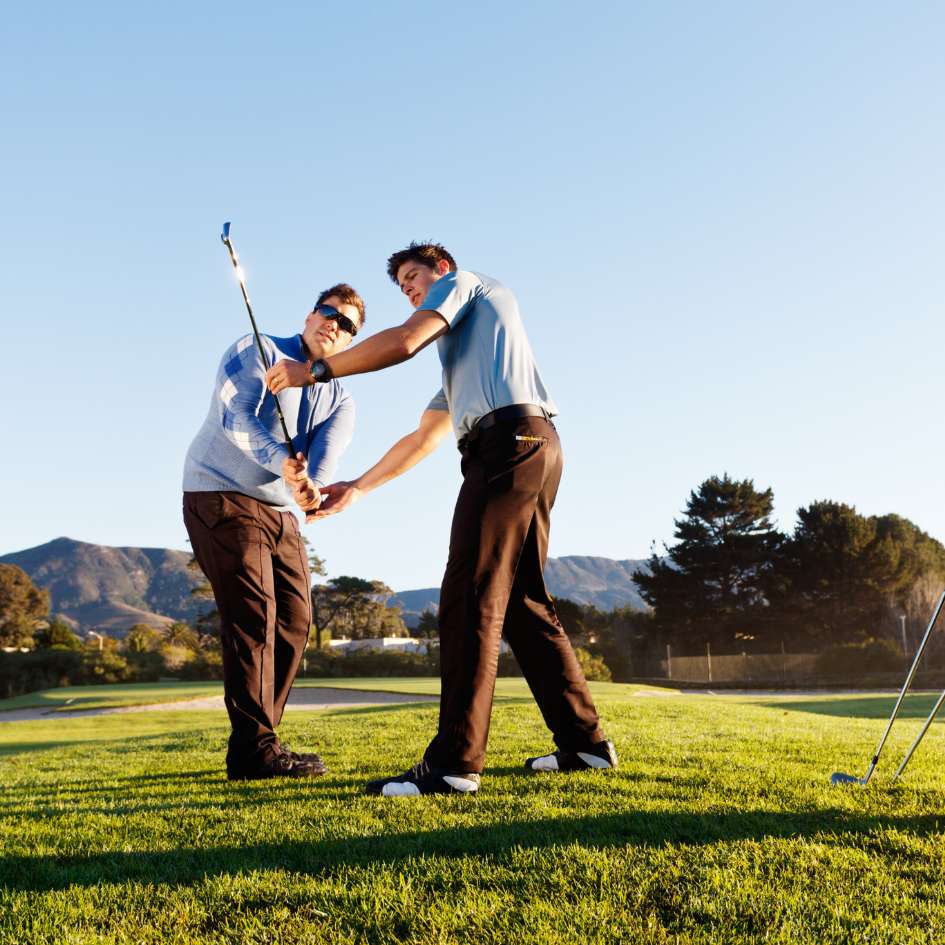
Mental Approaches to Swing Improvement
The mental aspect of the game plays a significant role in swing improvement. Adopt these strategies for a positive mindset.

Visualization Techniques: Visualize successful swings in your mind before each shot. Positive visualization enhances confidence and aids in replicating desired swing patterns.
Focused Practice Sessions: Approach your practice sessions with a specific focus. Target one aspect of your swing at a time, dedicating focused effort to each improvement area.
Patience and Persistence: Understand that swing improvement takes time. Be patient with the process and celebrate small victories along the way.
Positive Self-Talk: Cultivate a habit of positive self-talk on the course. Encourage yourself, even in challenging moments, and maintain a constructive internal dialogue.
Learn from Mistakes: View mistakes as learning opportunities. Analyze each swing, identify areas for improvement, and use setbacks as stepping stones to a better golf swing.
Seeking Professional Guidance
Consider enlisting the expertise of a professional golf instructor for personalized guidance.
Private Lessons: Private lessons provide one-on-one attention, allowing the instructor to assess your unique swing characteristics and tailor recommendations for improvement.
Video Analysis: Utilize video analysis during lessons to visually dissect your swing. Seeing your swing from different angles helps identify areas that require adjustment.
Customized Practice Plans: Work with an instructor to develop customized practice plans. Targeted drills and exercises can accelerate the improvement process under professional guidance.
Regular Check-Ins: Schedule regular check-ins with your instructor to track progress. Consistent feedback and adjustments contribute to ongoing improvement.
Utilizing Golf Technology: Leverage golf technology, such as swing analysis apps and launch monitors, during lessons. These tools provide valuable data for pinpointing areas of improvement.
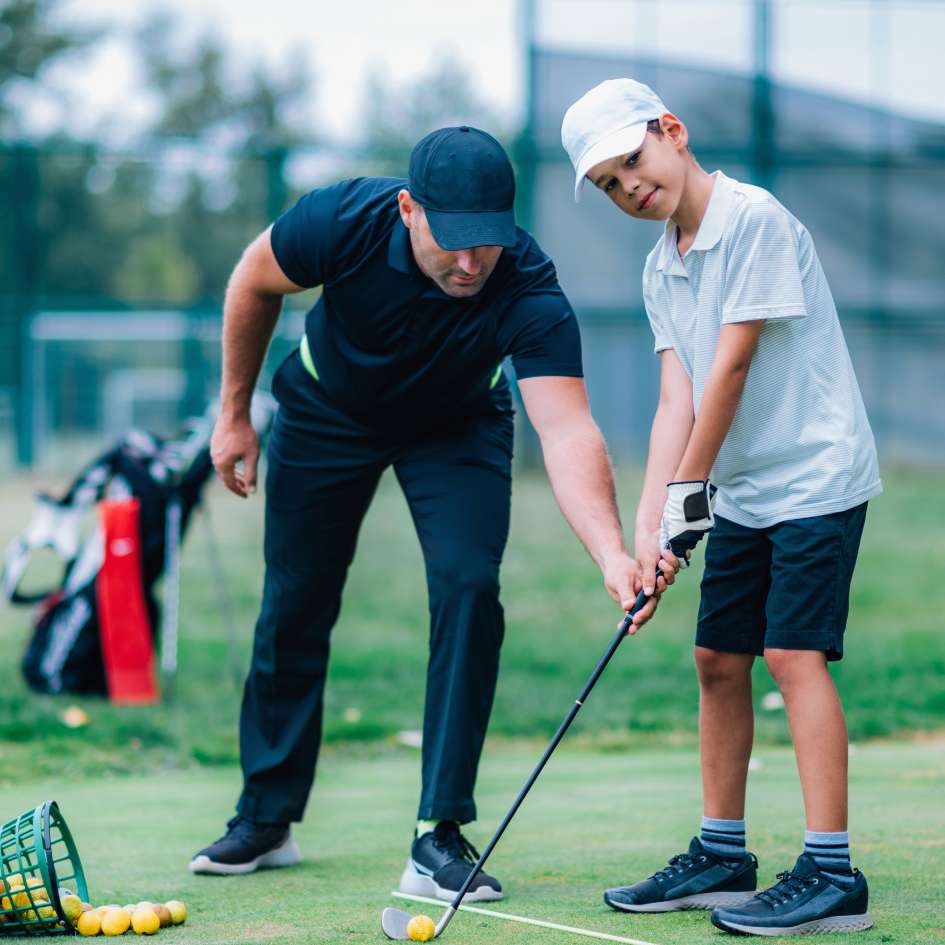
Ready to Take the Next Step? ⛳️
If you’re eager to dive deeper into golf’s intriguing world and master the ins and outs of the game, look no further than our “Golf For Beginners – The Ultimate Starter Guide.” Whether you’re a newbie or just brushing up on your skills, this online course has something for everyone.
⛳️ Discover the Ultimate Golf Starter Guide Right Here ⛳️
Conclusion: Your Journey to Swing Mastery
Congratulations! You’ve navigated through our comprehensive guide on how to improve your golf swing. Whether you’re a novice or seasoned player, continuous improvement is a shared goal in the golfing community. Apply these strategies, stay dedicated to your practice, and revel in the evolving experience of becoming a skilled and confident golfer. Golf For Beginners Academy is here to support you every step of the way. Happy swinging!

Learn How to Play Golf for Beginners
How to Play Golf for Beginners
A Comprehensive Guide
Welcome to Golf For Beginners Academy, your go-to resource for stepping into the world of golf. If you’re a beginner eager to learn how to play golf, you’ve come to the right place. In this detailed guide, we’ll take you through every aspect, from understanding the basics to stepping onto the course with confidence. Let’s tee off on this golfing journey!
Chapter 1: The Basics of Golf
Golf is a sport that combines precision, skill, and a touch of strategy. Before you dive into the intricacies, let’s establish a solid foundation with the basics:
Understanding the Golf Course: Familiarize yourself with the layout of a golf course – fairways, greens, hazards, and the tee box. Learn about par, which represents the number of strokes an expert golfer should take to complete the course or hole.
Golf Equipment Essentials: Get to know the basic golf equipment: clubs, balls, tees, and a golf bag. Each type of club serves a specific purpose, and understanding their roles is crucial for a beginner.

Chapter 2: Mastering the Golf Swing
The golf swing is at the heart of the game. Here’s a step-by-step guide to help you perfect your swing:
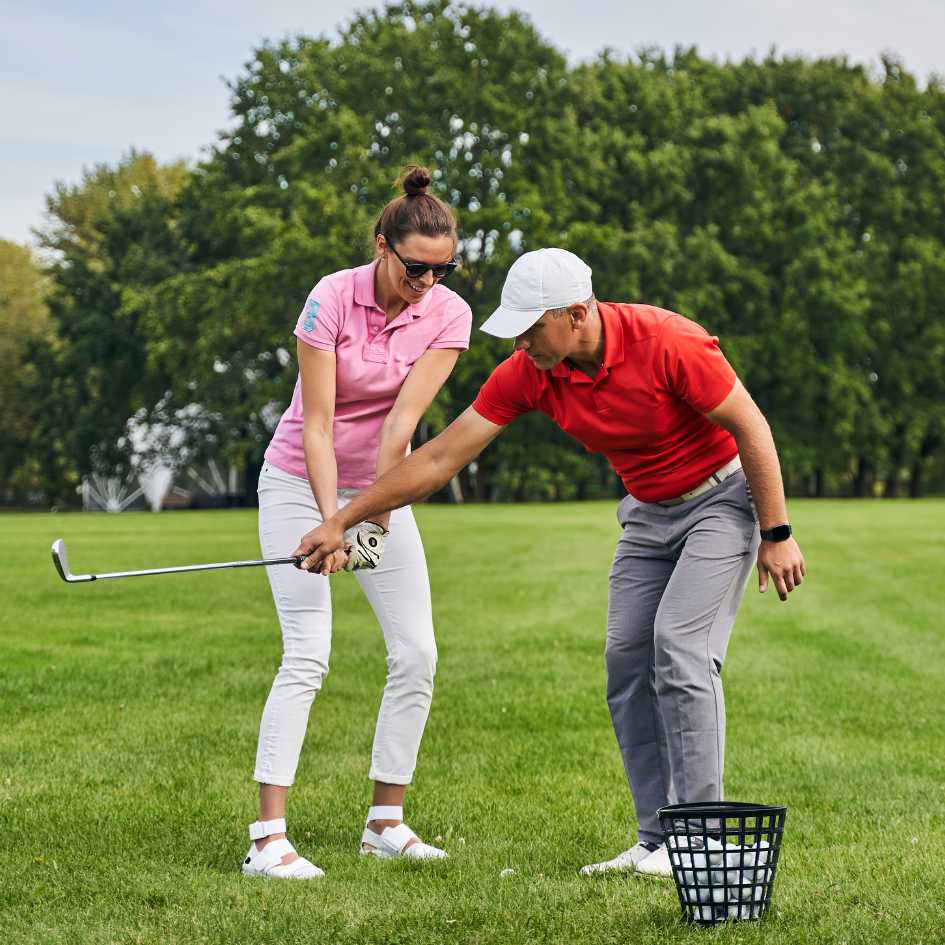
Grip Basics: Learn the correct way to hold the golf club. A proper grip sets the stage for a controlled and powerful swing.
Stance and Alignment: Achieve a balanced and consistent stance. Proper alignment ensures the ball goes where you intend it to.
The Golf Swing Motion: Break down the golf swing into backswing, downswing, and follow-through. Practice each phase to develop a smooth and efficient swing.
Understanding Ball Flight: Familiarize yourself with how different clubface positions and swing paths influence the direction and trajectory of the ball.
Chapter 3: Navigating the Short Game
The short game, including putting and chipping, is where precision truly matters. Let’s explore these critical aspects:
Putting Fundamentals: Master the art of putting by focusing on your grip, stance, and a smooth putting stroke. Distance control and accuracy are paramount on the green.
Chipping Techniques: Hone your chipping skills for shots around the green. Learn various techniques for different situations, including uphill and downhill lies.
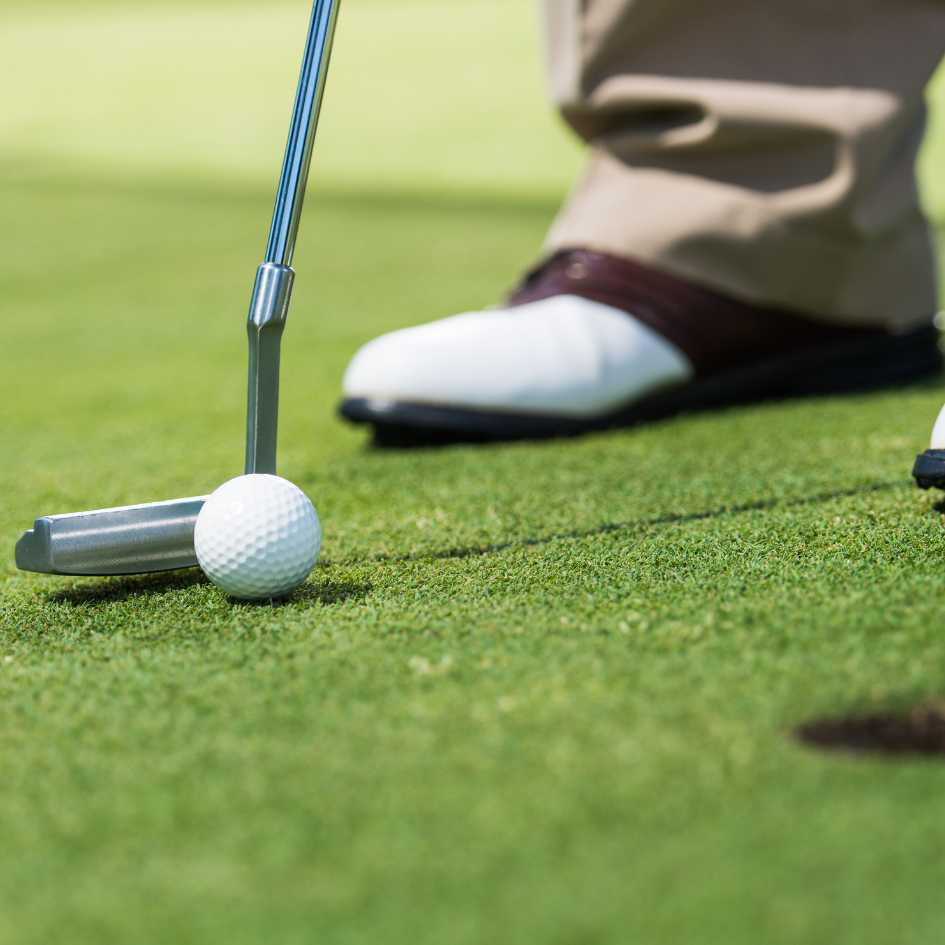
Chapter 4: Golf Etiquette and Rules
Understanding golf etiquette and rules is essential for an enjoyable and respectful experience on the course. Here’s what you need to know:

Golf Etiquette: Respect your fellow golfers by adhering to basic etiquette, such as maintaining a reasonable pace, keeping quiet during swings, and repairing divots.
Basic Golf Rules: Familiarize yourself with common golf rules, including penalty strokes, out-of-bounds, and drop procedures. Knowing the rules enhances the overall golfing experience.
Chapter 5: Taking Your Skills to the Course
Now that you’ve grasped the fundamentals, it’s time to transition from the practice range to the golf course:
Course Management: Develop a strategic approach to the course by understanding where to place shots, when to take risks, and how to manage different hole scenarios.
Playing with Others: Gain confidence in playing with others by understanding golf etiquette in a social setting. Learn how to keep pace and enjoy the camaraderie of the game.
Chapter 6: Continuous Improvement and Resources
Practice Routines: Establish effective practice routines to refine your skills consistently. Focus on specific aspects of your game, such as driving, iron play, and putting.
Golf Lessons and Resources: Consider taking golf lessons from a professional instructor. Additionally, leverage online resources, instructional videos, and golf publications to stay updated on tips and techniques.
Ready to learn more? ⛳️
If you’re eager to dive deeper into golf’s intriguing world and master the ins and outs of the game, look no further than our “Golf For Beginners – The Ultimate Starter Guide.” Whether you’re a newbie or just brushing up on your skills, this online course has something for everyone.
⛳️ Discover the Ultimate Golf Starter Guide Right Here ⛳️
Conclusion: Embark on Your Golfing Journey
Congratulations! You’ve completed our comprehensive guide on how to play golf for beginners. As you embark on your golfing journey, remember that improvement takes time and patience. Focus on continuous learning, practice, and most importantly, enjoy the game. Golf For Beginners Academy is here to support you every step of the way. Happy golfing!

What Clubs Do I Need to Play Golf?
What Clubs Do I Need to Play Golf?
Golf Clubs for Beginners: What You Need to Get Started
Are you wondering: What Clubs Do I Need to Play Golf? Welcome to the Golf For Beginners Academy, your go-to resource for taking your first steps in the world of golf. If you’re a novice golfer wondering which clubs are essential to kickstart your journey, you’re in the right place. In this comprehensive guide, we’ll break down the must-have clubs that will set you up for a fantastic round of golf and help you make the right choices without breaking the bank.
1. The Putter: Your Putting Partner
The journey begins with the trusty putter. Don’t worry about fancy designs or colors; find one that feels comfortable and suits your eye. Whether it’s a hand-me-down or a budget-friendly option, a putter is essential for those crucial short shots on the green.

2. The Sand-Wedge: Versatility Meets Precision

A sand-wedge is your ticket to escaping tricky situations, including bunkers and high, controlled shots. It’s a valuable addition to your bag for situations where you need to land and stop quickly. You don’t need to splurge; a functional sand-wedge will do the trick.
3. Irons: Choosing the Right Set
While a full set of irons can be costly, you can start with a simplified selection. Opt for a 9-iron and a 6 or 7-iron. These versatile clubs cover different distances and heights, allowing you to make significant progress without overloading your bag or your budget.

4. The Hybrid: Easier and Efficient

For longer shots with ease, consider adding a hybrid club (around 21-23 degrees) to your arsenal. Hybrids are user-friendly and versatile, making them a perfect choice for beginners. They excel in various scenarios and help you navigate different lies on the course.
5. The Driver: Unleash the Power
The driver is a game-changer, providing the potential for long-distance shots off the tee. While it’s often the most expensive club in your bag, it’s a must-have for tee-offs on most holes. Start with a basic driver to practice those essential drives and work on your accuracy.

Ready to Take the Plunge? ⛳️
If you’re eager to dive deeper into golf’s intriguing world and master the ins and outs of the game, look no further than our “Golf For Beginners – The Ultimate Starter Guide.” Whether you’re a newbie or just brushing up on your skills, this online course has something for everyone.
⛳️ Discover the Ultimate Golf Starter Guide Right Here ⛳️
Conclusion on: What Clubs Do I Need to Play Golf?
With these six clubs – putter, sand-wedge, 9-iron, 6 or 7-iron, hybrid, and driver – you’re well-equipped to embark on your golfing journey. Remember, you’re allowed up to 14 clubs in your bag, but these essentials will serve you brilliantly as a beginner. As you progress, you can invest in additional clubs or upgrade your existing ones. Golf is about enjoyment, and with the right equipment, you’re in for a fantastic time on the course. Have questions or need more recommendations? Feel free to share your thoughts in the comments below. We’re here to help you make the most of your golfing adventure!
If you want more detailed help with you game of golf, and specifically about the short game of golf, our partner-portal called World Of Short Game deliver great content for all short game related topics. Click here to visit World Of Short Game.
And if you live in Denmark, never hesitated to reach out to Danish Golf Academy for help with any part of your game.

Swing Smarter, Not Harder: Your Guide to Avoiding Topped Shots
Avoiding Topped Shots
Welcome to the Golf For Beginners Academy, where we’re on a mission to help you turn your golf game from frustrating to fantastic! If you’ve ever found yourself topping the ball and sending it embarrassingly low and off-target, you’re not alone. But fear not, we’ve got the insider tips to help you get your swing back on track. In this post, we’ll dive into the reasons behind topping the ball and share some essential insights to correct your swing. Let’s get started on the journey to more successful shots!
Why Do You Keep Topping the Ball?
Topping the golf ball happens when your clubface doesn’t make clean contact with the ball, resulting in a weak, low, and inaccurate shot. So, why does this happen? Let’s break it down.
The Shoulder Angle Dilemma
In your golf swing, the position of your shoulders plays a crucial role. Ideally, your shoulders should rotate on the same angle as your spine during the backswing. However, a common mistake, especially among beginners, is the left shoulder rotating more upwards instead of downwards. This causes your swing to go awry.
From a front view, this error looks like your left shoulder is lifting, rather than rotating down towards the ground. When your shoulder moves upward, it disrupts the desired upper body tilt of your swing, causing your head to rise excessively.
The Chain Reaction
Now, here’s the domino effect: as your head moves up, the golf club follows suit, moving up over the ground. This is precisely why you keep topping the ball. The clubface loses its ability to strike the ball cleanly, leading to those frustrating, scuffed shots.
How to Fix It: Swing Tips
Now that we’ve identified the problem, let’s talk solutions. Here are some tips to help you correct your swing and stop topping the ball:
Shoulder Awareness: During your backswing, focus on keeping your left shoulder rotating downward along your spine’s angle. This will help you maintain a steeper shoulder plane.
Practice Slow and Steady: Slow down your swing and practice it in slow motion. This will help you build muscle memory for the correct shoulder movement.
Head Position: Pay attention to your head. Keep it steady and avoid excessive movement. Imagine your head as the anchor point for your swing.
Professional Guidance: Consider taking lessons from a golf instructor who can provide personalized guidance to fix your swing mechanics.
Ready to Take the Plunge? ⛳️
If you’re eager to dive deeper into golf’s intriguing world and master the ins and outs of the game, look no further than our “Golf For Beginners – The Ultimate Starter Guide.” Whether you’re a newbie or just brushing up on your skills, this online course has something for everyone.
⛳️ Discover the Ultimate Golf Starter Guide Right Here ⛳️
Swing Smart, Swing High
Topping the golf ball can be frustrating, but with the right adjustments and plenty of practice, you can overcome this common issue. Remember, Rome wasn’t built in a day, and neither is a perfect golf swing. Stay patient, stay focused, and soon enough, you’ll be sending those balls soaring high and true. Your journey to becoming a better golfer starts now!

Sink More Putts with These Fun Putting Drills for Beginners
Fun Putting Drills for Beginners
Sink More Putts with These 5 Favorite Fun Putting Drills for Beginners
Fun Putting Drills for Beginners – Welcome to the Golf For Beginners Academy, where we’re all about helping you kickstart your golf journey with a big swing (or should we say, putt?). If you’re new to the world of golf or looking to up your putting game, you’ve come to the right place! In this post, we’re going to introduce you to five super-fun putting drills that will not only sharpen your skills but also have you grinning from ear to ear on the greens. So, grab your putter and let’s roll!
1. Clock Drill: "Time" to Get Better at Putting!
Imagine turning your golf ball into the minute hand of a clock. Intrigued? Set up a circle of tees around the hole, mimicking the hours on a clock face. Start at 3 feet and make your way around, sinking putts from each “hour.” As you become a putting pro, increase the distance. You’ll be surprised how addictive it is to watch your game “tick” forward!
Here is what to do:
- Place six tees in a circle around the hole, representing the numbers on a clock (12, 3, 6, 9, and the points in between).
- Start at 3 feet from the hole and attempt to sink putts from each “hour” on the clock.
- Gradually increase the distance to the hole as you become more comfortable with the drill.
2. Gate Drill: Paving the Way to Precision!
Picture this: a gateway to putting perfection. Set up two tees or alignment sticks just wider than your putter head about 3-4 feet from the hole. Your mission? Putt through the “gate” without touching the tees. It’s like threading a needle with your putter, and when you master it, your accuracy will be off the charts.
Here is what to do:
- Set up two tees or alignment sticks just wider than the width of your putter head about 3-4 feet from the hole.
- Practice putting through the “gate” without touching the tees.
- This drill helps improve your strikepoint and accuracy.
3. Lag Putting Game: Where Distance Meets Precision!
Ever heard the saying, “Drive for show, putt for dough”? This game is all about the dough! Place balls at varying distances from the hole and focus on getting them to stop within a 3-foot radius. Master this, and you’ll have the perfect recipe for consistent, confidence-boosting putts.
Here is what to do:
- Place several golf balls at various distances from the hole, ranging from short to long putts (e.g., 3 feet, 6 feet, 10 feet, 15 feet).
- Focus on making each putt stop within a 3-foot radius around the hole.
- This game helps develop your distance control on putts.
4. Two-Ball Challenge: Double the Fun, Double the Skill!
Who says golf can’t be a party? Grab two golf balls and putt them simultaneously toward your target. The challenge? Make both putts or get them as close as possible. It’s like patting your head and rubbing your tummy, but for golfers. This drill is a blast and boosts your consistency and confidence in your putting stroke.
Here is what to do:
- Take two golf balls and putt them simultaneously toward the same target.
- The goal is to make both putts or get both balls as close to the hole as possible.
- This drill helps improve consistency and confidence in your putting stroke.
5. Putting Horse: A Fun Game with a Dash of Competition!
Ready to add some friendly competition to your practice? Enter “Putting Horse,” inspired by the classic basketball game of HORSE. Challenge a friend to replicate your chosen putt, and if they miss, they get a letter (starting with “H”). Keep going until one of you spells out “HORSE.” Loser buys the post-game snacks!
Here is what to do:
- Similar to the basketball game of HORSE, you can play a putting game with a partner.
- One player selects a putt (e.g., a 10-foot downhill break from left to right).
- If they make the putt, the other player has to replicate it. If they miss, they receive a letter (starting with “H”).
- Continue until one player spells out “HORSE.”
- This game adds an element of pressure and fun competition to your putting practice.
Ready to Take the Plunge? ⛳️
If you’re eager to dive deeper into golf’s intriguing world and master the ins and outs of the game, look no further than our “Golf For Beginners – The Ultimate Starter Guide.” Whether you’re a newbie or just brushing up on your skills, this online course has something for everyone.
⛳️ Discover the Ultimate Golf Starter Guide Right Here ⛳️
Conclusion on Fun Putting Drills for Beginners
Practice doesn’t have to be dull, and improving your putting skills can be a ton of fun! These five putting drills will not only help you become a better golfer but also make your time on the greens an absolute delight. So, whether you’re dreaming of sinking that game-winning putt or just enjoying a sunny day on the golf course, these drills are your ticket to putting success. Happy putting, golfers!
Did you like "Fun Putting Drills for Beginners"?
If you want more detailed help with you game of golf, and specifically about the short game of golf, our partner-portal called World Of Short Game deliver great content for all short game related topics. Click here to visit World Of Short Game.
And if you live in Denmark, never hesitated to reach out to Danish Golf Academy for help with any part of your game.
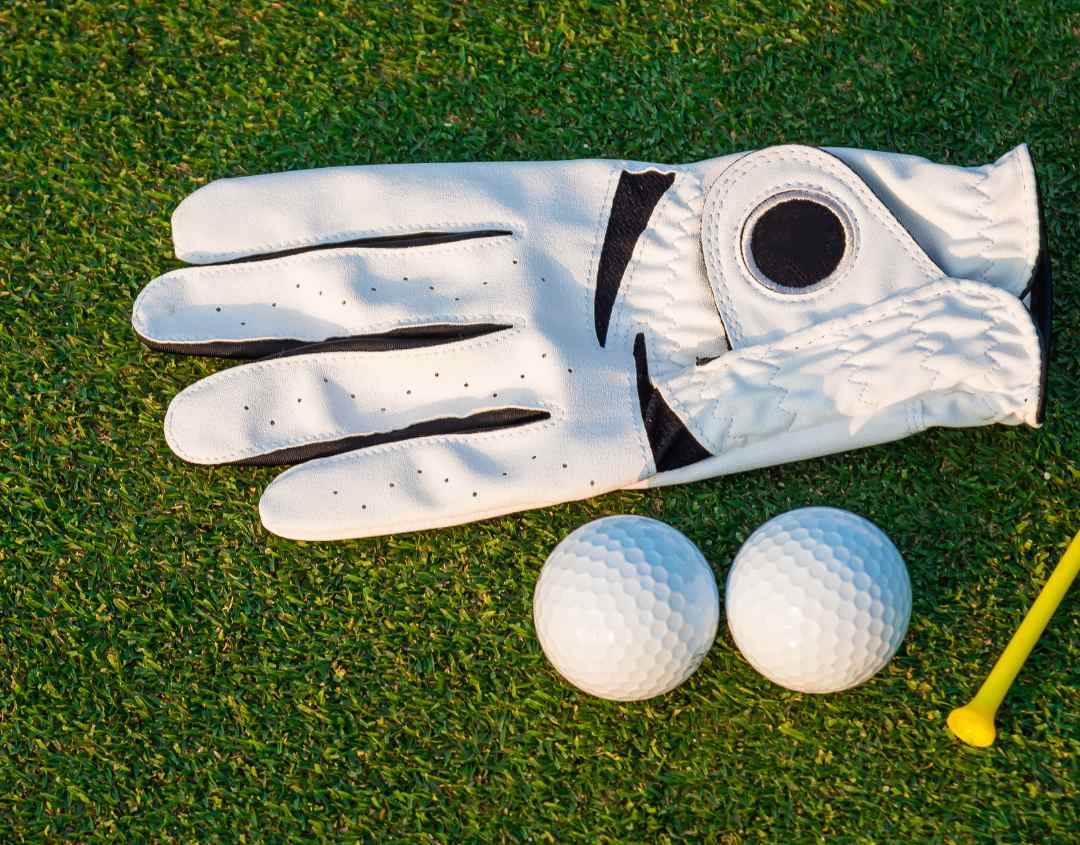
Grip, Style, and More: What’s the purpose of a golf glove?
What's the purpose of a golf glove?
The Unsung Hero of Golf
Hello, golf enthusiasts! Amidst the excitement of clubs, balls, and picturesque courses, one humble accessory often goes unnoticed – the golf glove. But do you know why golfers slip into these second-skin wonders? Today, we unravel the secrets and surprises behind the purpose of a golf glove in a way that’s both entertaining and enlightening. Let’s tee off on this journey to discover why the golf glove is your unsung hero on the course!
The Essential Grip Enhancer
At the heart of a golf glove’s purpose is its role as a grip enhancer. Let’s delve into how it achieves this:
Friction Mastery: The glove’s fabric is ingeniously designed to provide optimal friction against the club’s handle. This feature plays a pivotal role in minimizing the risk of the club slipping or twisting during the crucial moments of your swing.
Advanced Moisture Control: Many golf gloves are crafted with moisture-wicking materials. These are vital in maintaining a consistent and secure grip, particularly under the challenging conditions of heat and humidity.
The Guardian of Your Hands
Beyond enhancing your grip, the golf glove serves as a protective guardian:
Blister and Callous Prevention: Regular golfing can take a toll on your hands, potentially leading to blisters or callouses. The glove acts as a protective barrier, safeguarding your skin from the repetitive stress and friction caused by gripping the club.
Enhanced Comfort and Pressure Distribution: The glove also functions as a cushioning layer. It distributes the pressure more evenly across your hand, significantly increasing comfort during a prolonged round of golf.
Style and Identity
Golf gloves are not just functional; they are also a medium of personal expression:
Fashion and Personal Style: Available in various designs and hues, golf gloves offer an avenue for golfers to showcase their style. From classic to contemporary, there’s a glove to suit every golfer’s aesthetic.
Signature Accessory for Golfers: For many players, a golf glove is more than just a piece of equipment; it’s a part of their golfing identity. It becomes synonymous with their presence on the course, much like a signature accessory that completes their unique golfing persona.
The Hidden Gem: "Golf For Beginners - The Ultimate Starter Guide!⛳️
Ready to delve deeper into the world of golf accessories and techniques? Our online course, “Golf For Beginners – The Ultimate Starter Guide,” is your gateway to mastering golf’s ins and outs. Whether you’re new to the game or looking to refine your skills, this course has got you covered. Excited to learn?
⛳️ Discover the Ultimate Golf Starter Guide Right Here ⛳️
The conclusion on what's the purpose of a golf glove?
The next time you slip on your golf glove, remember that it’s more than just an accessory. It’s your grip guru, your style statement, and your callous defender. It’s the unsung hero that quietly enhances your game, stroke by stroke. So, wear it with pride, grip with confidence, and let the greens become your canvas for golfing excellence!
If you want more detailed help with you game of golf, and specifically about the short game of golf, our partner-portal called World Of Short Game deliver great content for all short game related topics. Click here to visit World Of Short Game.
And if you live in Denmark, never hesitated to reach out to Danish Golf Academy for help with any part of your game.

Tee Time Fashion: What Should I Wear for Golf?
Tee Time Fashion: What Should I Wear for Golf?
The Golf Course Runway
Hello, stylish golfers! While the golf course isn’t exactly a catwalk, it’s a place where fashion meets function. Choosing the right attire isn’t just about looking good; it’s about comfort, performance, and respecting the traditions of the game. So, if you’ve ever asked, “What should I wear for golf?” – this guide is your fashion tee-off to a stylish and functional golf wardrobe. Let’s step onto the golf course runway!
The Basics of Golf Attire

Before we dive into the wardrobe, let’s understand the ground rules:
Collared Shirts: Most golf courses require collared shirts for men and women. It’s a timeless look that adds an air of sophistication to your game.
Golf Shorts or Slacks: Opt for shorts or slacks made of breathable, moisture-wicking fabric. They offer comfort and keep you cool on those sunny days.
Golf Skirts or Skorts: Ladies, golf skirts and skorts are a fantastic choice. They blend style with flexibility, allowing you to swing freely.
The Perfect Golf Polo
Fit Matters: Choose a polo with a comfortable fit that allows you to move freely. Avoid overly baggy or tight options.
Fabric Choices: Look for polos made from moisture-wicking materials. These fabrics keep sweat at bay, ensuring you stay dry and comfortable throughout your round.
Colors and Patterns: Golf polos come in various colors and patterns. Classic solid colors are always a safe bet, but don’t be afraid to add a pop of personality with stripes or subtle patterns.
Bottoms Up!
Shorts and Slacks: Opt for shorts and slacks with a comfortable fit. They should allow for a full range of motion without being too loose or too tight.
Length Matters: Shorts should be an appropriate length, typically just above the knee. Avoid overly long or short styles.

Dressing for the Weather
Cool Weather: On chilly days, consider layering. A moisture-wicking base layer, topped with a lightweight pullover or windbreaker, will keep you warm and stylish.
Hot Weather: In the heat, lightweight fabrics are your best friend. Look for shorts and polos designed to wick away moisture and keep you cool.
The Hidden Gem: "Golf For Beginners - The Ultimate Starter Guide"? ⛳️
Ready to take your golf game and style to the next level? Our online course, “Golf For Beginners – The Ultimate Starter Guide,” is your gateway to golfing mastery. Whether you’re new to the game or looking to refine your skills, this course has got you covered. Eager to learn?
⛳️ Discover the Ultimate Golf Starter Guide Right Here ⛳️
Swing in Style
Golf attire is more than just clothing; it’s an expression of your passion for the game. By adhering to the course’s dress code while adding your personal flair, you’ll be ready to conquer the fairways in both style and comfort. So, dress the part, tee off in confidence, and let the greens become your runway for golfing excellence!
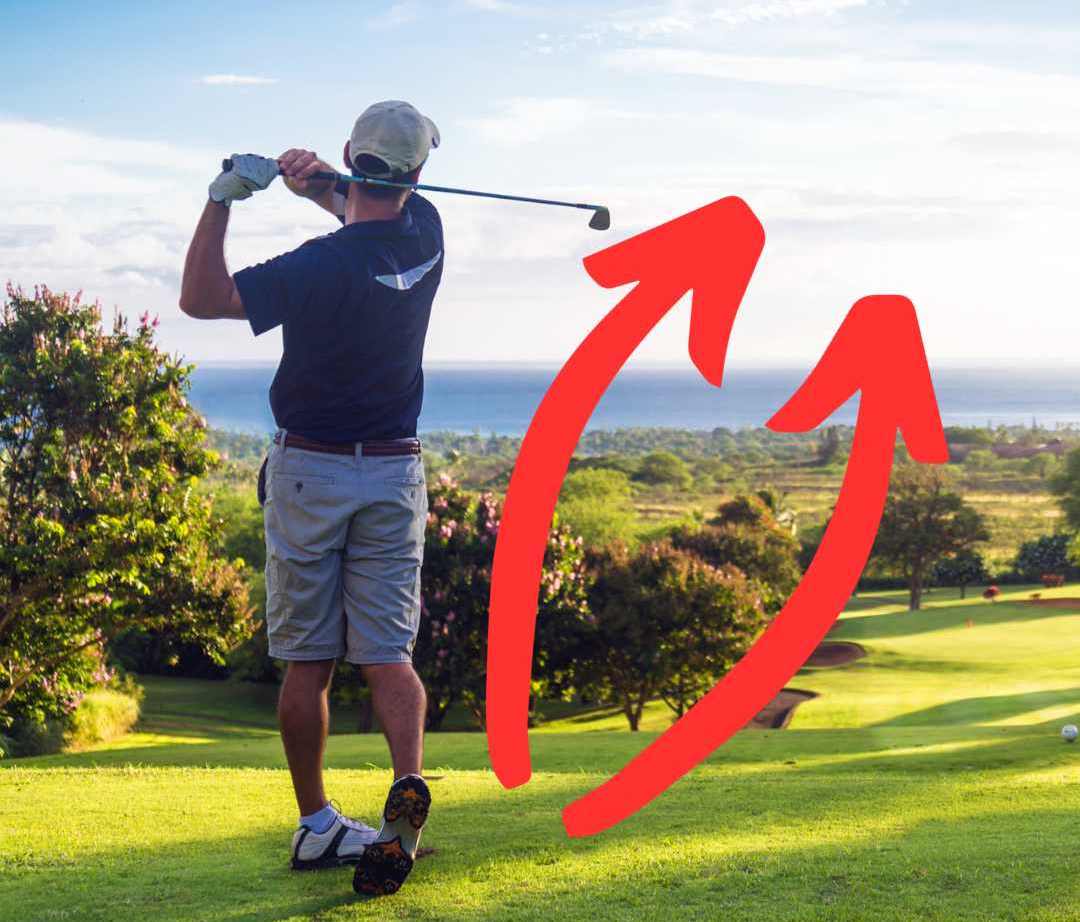
What’s the difference between a fade and a draw?
What's the difference between a fade and a draw?
The Art of Curving the Ball
Greetings, golf aficionados! If you’ve ever marveled at the magic of curving a golf ball in flight, you’ve likely heard of two terms: fade and draw. These are like the secret handshakes of golfers, allowing you to shape your shots with precision. This guide is your ticket to unraveling the mystery of fades and draws in a way that’s as enjoyable as sinking a birdie putt. So, grab your clubs, and let’s dive into the world of shot shaping in golf!
Meet the Fade and the Draw
Before we explore the techniques, let’s get to know our golfing buddies:
Fade: A fade is a shot that curves gently from left to right (for right-handed golfers) or right to left (for lefties). It’s like a controlled drift in the breeze.
Draw: On the other hand, a draw is a shot that curves slightly from right to left (for righties) or left to right (for left-handed golfers). It’s the art of making the ball dance.
The Fade: Sculpting the Sky
Grip Adjustment: To hit a fade, slightly weaken your grip. This means rotating both hands a bit to the left (for righties). It encourages an open clubface at impact.
Stance Alignment: Aim slightly left of your target (for righties) to accommodate the fade’s left-to-right curve.
Swing Path: Swing along your body line but slightly from outside to inside. This promotes a left-to-right spin on the ball.
The Draw: Painting the Fairway
Grip Adjustment: To create a draw, strengthen your grip slightly. This means rotating both hands a bit to the right (for righties). It encourages a closed clubface at impact.
Stance Alignment: Aim slightly right of your target (for righties) to allow for the draw’s right-to-left curve.
Swing Path: Swing along your body line, but this time, slightly from inside to outside. This imparts a right-to-left spin on the ball.
Hidden Gem: "Golf For Beginners - The Ultimate Starter Guide"
Ready to take your shot shaping skills to the next level? Our online course, “Golf For Beginners – The Ultimate Starter Guide,” delves deep into fades, draws, and so much more. Whether you’re just starting or aiming to refine your skills, this course is your gateway to golfing mastery. Eager to learn?
⛳️ Discover the Ultimate Golf Starter Guide Right Here ⛳️
Shape Your Game, Shape Your Destiny
Fades and draws are the strokes of artists on the golf course, allowing you to navigate around obstacles and make that ball dance to your tune. Whether you’re painting the sky with a fade or sculpting the fairway with a draw, these techniques add flair to your game. So, practice, experiment, and let the fairways become your canvas for golfing brilliance!
If you want more detailed help with you game of golf, and specifically about the short game of golf, our partner-portal called World Of Short Game deliver great content for all short game related topics. Click here to visit World Of Short Game.
And if you live in Denmark, never hesitated to reach out to Danish Golf Academy for help with any part of your game.
Recent Comments
Copyright @ 2024 - Golf For Beginners Academy

